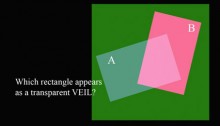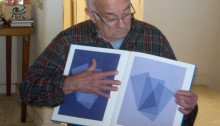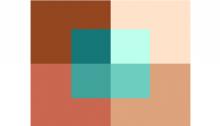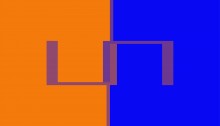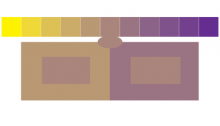Color Relationships 2, 2015 week 2
The second session of the Color Relationships class for Winter 2015 was held on Friday, January 16. We critiqued the solutions to the film illusion assignment (Create the illusion of a colored film over two or more colors), and had an introduction to veils. The new homework assignment is to create the illusion of one or more veils over a set of two or more colors, incorporating an actual veil (a piece of tracing paper or the like) into the study. Films and veils are two visual phenomena that help to unify and create emotion in a piece, intriguing the viewer and inviting their participation.
